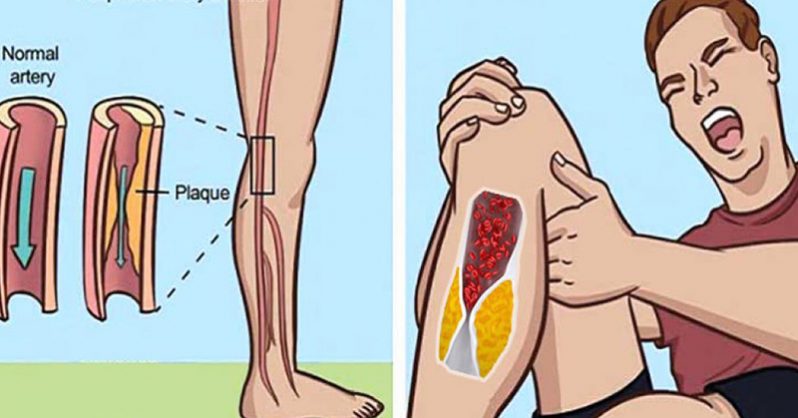Blood clots are jelly-like masses created as a result of an injury in an attempt of the body to prevent excessive bleeding. A clot in the injured area is created by platelets and proteins in the plasma, and when the injury is healed, the body dissolves the clot.
Yet, blood clots can form inside the veins and arteries without an injury, and this causes a stroke or pulmonary embolism. CDC reveals that:
- Stroke is the main cause of severe long-term disability
- It affects over 130,000 Americans annually
- Every 40 seconds, an American has a stroke, and every 4 minutes, someone dies of a stroke.
- About 87% of all strokes are ischemic, which are characterized by a blockage of the blood flow to the brain
- Over 795,000 Americans have a stroke annually, and about 610,000 of them are first or new strokes.
- Around 185,000 strokes occur in people who have had a previous stroke.
- Every year, stroke costs the United States an estimated $33 billion of health care services, medicines, and missed days of work.
Therefore, blood clots are a serious issue and should receive a serious treatment.
When they occur in the veins and arteries, they cause severe damage. The role of the arteries is to carry oxygenated blood away from the heart, and the veins should return oxygen-depleted blood to the heart.
Arterial clots block the oxygen and blood flow from reaching the vital organs, and most commonly form in the legs and feet. When formed in the heart, they cause a heart attack, and if formed in the brain, they lead to a stroke.
These are the symptoms of arterial clots:
- Muscle pain and spasms
- Cold arms or legs
- Weakness in the affected area
- Loss of color in the affected area
- Tingling or numbness in the leg or arm
These are the risk factors for arterial clots:
- Obesity
- Physical inactivity
- Diabetes
- High blood pressure
- High cholesterol
- Smoking
Venous blood clots are slowly formed in the veins, and usually develop after a surgery or trauma. They can be of three types: deep vein thrombosis (DVT), pulmonary embolism (PE) and superficial venous thrombosis.
The first type usually occurs in the thigh, lower leg, or pelvis, but it can also form in other areas of the body like the liver, the arm, brain, intestines, or kidneys.
PE can be fatal as it has broken off the point of origin and travels to the lungs. Superficial venous thrombosis forms near the surface of the skin, and is really painful.
These are the most common symptoms of venous clots:
- Painful vein, hard to touch
- Painful, swollen or inflamed skin over a vein
- Reddened skin over the vein
The American Society of Hematology claims that one experiences the following 5 symptoms due to the formation of a blood clot in a certain area:
Brain – Weakness of the face, arms or legs, dizziness, vision issues, difficulty speaking, sudden and severe headache.
Heart – Chest heaviness or pain, nausea, shortness of breath, discomfort in other areas of the upper body, sweating, light-headedness
Lung – Sharp chest pain, shortness of breath, sweating, racing heart, fever, coughing up blood
Arm or Leg – Sudden or gradual pain, swellings, tenderness, and warmth, and loss of hair on legs
Abdomen – Intense abdominal pain, diarrhea, vomiting
To prevent the formation of blood clots in the body, you should follow the tips below:
Active lifestyle
Start exercising regularly, as the adverse effects of sedentary lifestyles are extremely detrimental.
Healthy diet
You should stay away from foods that are rich in GMOs, sugars or artificial sweeteners, avoid processed foods, refined carbs, and trans fats.
Medication changes
Try to find some healthier alternatives to hormone medications, blood pressure, and cancer medications, as they raise the risk of blood clots.
Smoking
Tobacco elevates the risk of blood clots.
Furthermore, the following natural blood thinners and supplements will help you prevent the formation of blood clots:
- Vitamin C – This potent antioxidant supports vascular health.
- Gingko – It lowers fibrin content, a protein essential in the formation of blood clots.
- Omega 3 Fatty Acids – Increase the intake of foods rich in omega 3, like fish, pumpkin seeds, and walnuts.
- Vitamin E – This vitamin protects against oxidation, so you should consume more almonds, green leafy vegetables, kiwi, avocado, broccoli, and butternut squash.
- Bilberry, Ginger, and Turmeric – These impede the ability of platelets to become clumped, which causes blood clot formation.
- Natural antibiotics – These include garlic, onions, and olive oil.
Source: theheartysoul.com
